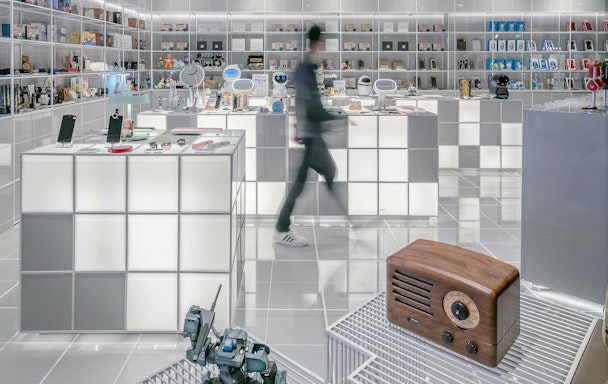Social’s shoppable revolution: where to start
Social platforms have long had e-commerce links, but single-click on-platform shopping is the industry’s latest frontier. Shamsul Chowdhury, vice-president of paid social at Jellyfish, tells us how brands can get started in this emerging space.

Jellyfish imagines what the future of social shopping will look like
We’ve seen the rise of online shopping accelerate as a by-product of the pandemic. As physical stores shut down or were operationally limited, digital counterparts took center stage to apply a tourniquet to an otherwise haemorrhaging bottom line.
Over the last few years, the role of social media has also evolved. It played a large role in entertainment while the world was on lockdown, but social platforms have tried their hand in commerce for several years. Platforms such as Facebook, Instagram and Snapchat have always performed well in driving revenue for retail brands. They were just looking for an avenue to enhance their craft. Thus shoppable units were born.
Shoppable units have been in early stages for a few years now, but the technology, and consumer habits, have evolved recently to give platforms an opportunity to perform. We’re seeing the rise of social platforms allowing in-platform shopping à la Instagram Checkout. TikTok has leaned into live shopping, following WeChat.
Online shopping’s third act
It’s the evolution of online shopping. As online shoppers, we’ve gone from navigating mass retail sites to direct-to-consumer (DTC) and now the third act, direct in-platform (DIP).
How we can get what we want plays a large role in choosing whether to pursue it. As the adage goes, ‘is the juice worth the squeeze?’ Retailers have long seen that the more steps a consumer is asked to take before checking out, the higher the likelihood they will abandon their cart. Three clicks are standard; anything beyond that has a detrimental impact on checkout. What if you could do it in one click? That’s the aspiration of social platforms.
See and buy. No more adding to the cart. No more inputting personal or credit card details. It’s all stored at the platform level. The entire shopping experience is as seamless as can be.
Rising expectations
As platforms hone in on DIP product offerings, consumer expectations will increase. In-platform shopping will be the norm and the expected experience. Driving consumers to a browser will lead to drop-offs. It’s like when Facebook and others implemented in-stream video (previously, YouTube videos would link out of Facebook to be watched on YouTube). Strange now to think that users would leave one platform to view content on another when their expectation was that the content would sit natively on the initial platform. Now replace ‘view content’ with ‘shop.’ That’s what we can expect to see as in-platform shopping becomes the norm.
Brands must lean into each platform that offers DIP. It’s important to understand logistics and requisites so that they are prepared to deliver these experiences to their consumers.
There’s some concern around these shops as they live on the platforms, and not on the owned and operated assets of the brand. But to drive growth, there must be a willingness to relinquish some control. While the same level of audience retargeting and insights won’t be available, the trade-off is, likely, more revenue. DIP could very well be the price to pay to play in the space. One that should prove its worth incrementally.
Where should brands start?
For those with hundreds of thousands of stock-keeping units (SKUs), the thought of mirroring a brand’s site into a platform store can be a daunting task. But it’s one that may not necessarily be required.
Brands can focus on product segments that they feel would yield the best return through in-platform shopping. Some showcase their bestsellers, while others opt for new season launches. The range of products varies, but what remains consistent is a strategy behind the products in-store. It’s not just a copy/paste of an entire catalogue across platforms. Whatever platform you choose, optimize it to perform.
For brands to win in this next frontier of online shopping, there are a few rules of engagement.
First, build a store. Being present is the first step. Ensure your brand has a presence on the platforms your consumers are using.
Second, pick your products. There’s no need for product overload. Focus on the products that are most likely to convert. It’s OK to start small with a handful of products. Be sure to look at site conversion data to find products that have the most sales and page visits.
Finally, rotate inventory. It’s all about testing and learning to see which products are driving sales. The cadence at which products are rotated can vary, but should be at least once a month to inject new product excitement and sales.
The future of social shopping is here and all platforms are racing to join the next frontier of online shopping. It will be interesting to see if the seamlessness of instant checkout results in an increase in returns courtesy of impulse purchases. If so, that will create a new set of problems for brands – one they’ll have to evaluate to see whether DIP purchasers are high lifetime value customers, or if they’re low value and problematic ones.
Content by The Drum Network member:

Jellyfish
Jellyfish is a marketing performance company for the platform world, where success demands a creative, multi-platform mindset. We help brands thrive, by navigating,...
Find out more
